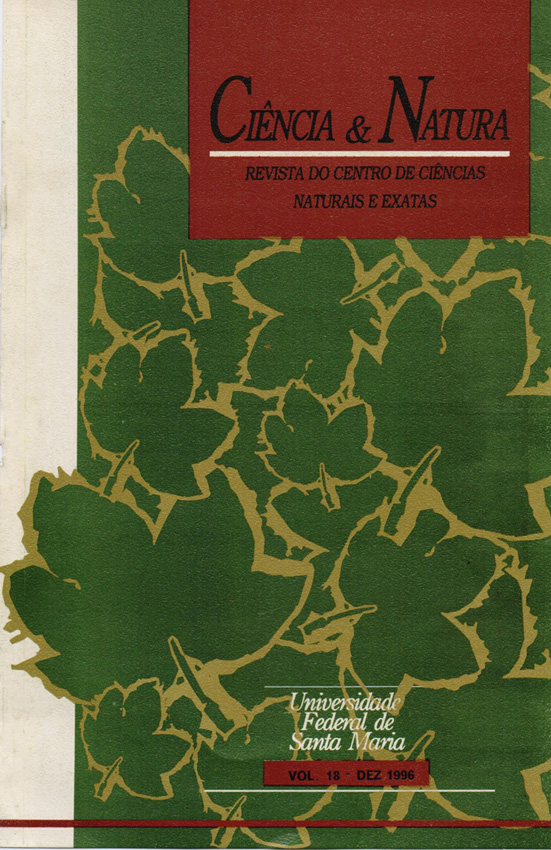Produção de corpos cerâmicos a partir de argila aditivada com polpa de papel reciclado e com embalagem aluminizada moída
DOI:
https://doi.org/10.5902/2179460X26608Resumo
Investigou-se a possibilidade de aproveitamentode polpa de papel reciclado (jornais velhos) e de embalagens aluminizadas (de leite longa vida) comoaditivos para a argila vermelha na confecção de corpos cerâmicos maciços (tijolos). Além do aspecto tecnológico, são de grande interesse ambiental alternativas para o reaproveitamento de materiais descartados, integrantes do lixo comunitário. A polpa de papel foi obtida a partir de simples desfibramento aquoso de jornais velhos, enquanto que, as embalagens de leite longa vida, por apresentarem camadas plásticas e de alumínio estabilizado, sofreram redução de tamanho e subsequente cominuição em micro-moinho. A argila para o processo semi-úmido (com 5% a 10% de umidade) foi fornecida pela olaria anexa ao campus da UFSM. O processo de mistura da massa foi inteiramente manual, utilizando-se para tanto diversas proporções de argila/polpa de papel e de argila/embalagem aluminizada cominuída. Os corpos cerâmicos foram moldados, também, manualmente (formas metálicas 30x40x60 mm), obtendo-se uma massa compacta, aparentemente homogênea. A seguir, os corpos de prova sofreram processos de pré-secagem, secagem e cozimento, segundo as normas NBR 7170 e NBR 8041. Sob controle de qualidade externo (exame visual), as amostras demonstraram boas porosidade, homogeneidade e conformação, sendo então submetidas á testes de densidade e de resistência á compressão. Os resultados obtidos permitem concluir que a adição de polpa de papel reciclado e de embalagem aluminizada triturada (em micro-moinho), em pequenas e determinadas proporções, á argila, não traz prejuízos á resistência mecânica de corpos cerâmicos, e pode ser vantajosa estruturalmente no aspecto de isolamento térmico e acústico em paredes internas residenciais.
Downloads
Referências
NORTON, Frederick H. - Introdução à Tecnologia Cerâmica. São Paulo, Ed. Universidade de São Paulo, 1973.
VAN VLACK, Lawrence H. - Propriedades dos Materiais Cerâmicos. São Paulo, Ed. Universidade de São Paulo, 1973.
GRIM, RALPH. E. - Clay Mineralogy, 2nd. ed., Macgraw Hill Book Company.
RIPOLLI FILHO, Francisco et aI. - Curso Básico de Cerâmica Vermelha Estrutural, Polígrafo do Curso de Engenharia Civil da UFSM.
Downloads
Publicado
Como Citar
Edição
Seção
Licença
Para acessar a DECLARAÇÃO DE ORIGINALIDADE E EXCLUSIVIDADE E CESSÃO DE DIREITOS AUTORAIS clique aqui.
Diretrizes Éticas para Publicação de Revistas
A revista Ciência e Natura está empenhada em garantir a ética na publicação e na qualidade dos artigos.
A conformidade com padrões de comportamento ético é, portanto, esperada de todas as partes envolvidas: Autores, Editores e Revisores.
Em particular,
Autores: Os Autores devem apresentar uma discussão objetiva sobre a importância do trabalho de pesquisa, bem como detalhes e referências suficientes para permitir que outros reproduzam as experiências. Declarações fraudulentas ou intencionalmente incorretas constituem comportamento antiético e são inaceitáveis. Artigos de Revisão também devem ser objetivos, abrangentes e relatos precisos do estado da arte. Os Autores devem assegurar que seu trabalho é uma obra totalmente original, e se o trabalho e / ou palavras de outros têm sido utilizadas, isso tem sido devidamente reconhecido. O plágio em todas as suas formas constitui um comportamento publicitário não ético e é inaceitável. Submeter o mesmo manuscrito a mais de um jornal simultaneamente constitui um comportamento publicitário não ético e é inaceitável. Os Autores não devem submeter artigos que descrevam essencialmente a mesma pesquisa a mais de uma revista. O Autor correspondente deve garantir que haja um consenso total de todos os Co-autores na aprovação da versão final do artigo e sua submissão para publicação.
Editores: Os Editores devem avaliar manuscritos exclusivamente com base no seu mérito acadêmico. Um Editor não deve usar informações não publicadas na própria pesquisa do Editor sem o consentimento expresso por escrito do Autor. Os Editores devem tomar medidas de resposta razoável quando tiverem sido apresentadas queixas éticas relativas a um manuscrito submetido ou publicado.
Revisores: Todos os manuscritos recebidos para revisão devem ser tratados como documentos confidenciais. As informações ou ideias privilegiadas obtidas através da análise por pares devem ser mantidas confidenciais e não utilizadas para vantagens pessoais. As revisões devem ser conduzidas objetivamente e as observações devem ser formuladas claramente com argumentos de apoio, de modo que os Autores possam usá-los para melhorar o artigo. Qualquer Revisor selecionado que se sinta desqualificado para rever a pesquisa relatada em um manuscrito ou sabe que sua rápida revisão será impossível deve notificar o Editor e desculpar-se do processo de revisão. Os Revisores não devem considerar manuscritos nos quais tenham conflitos de interesse resultantes de relacionamentos ou conexões competitivas, colaborativas ou outras conexões com qualquer dos autores, empresas ou instituições conectadas aos documentos.






